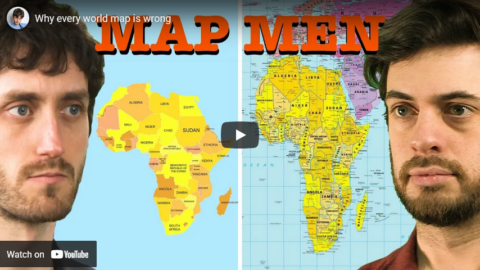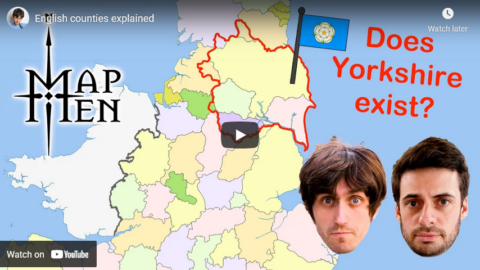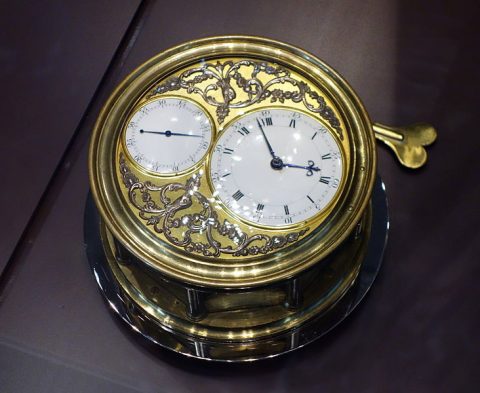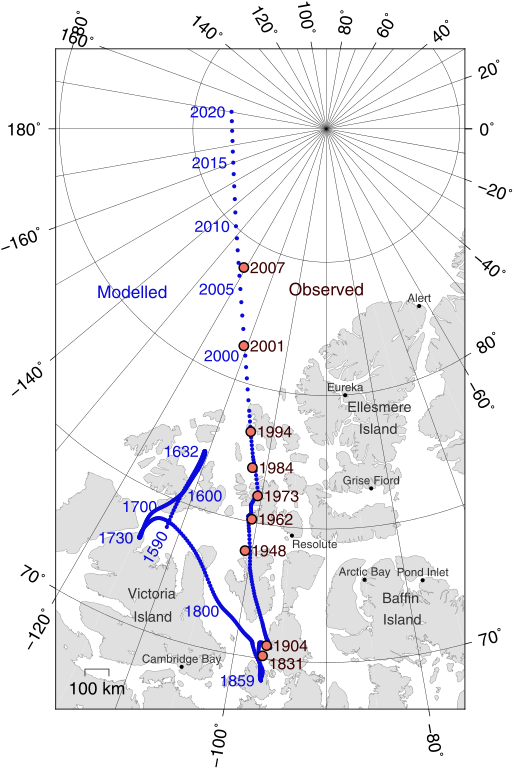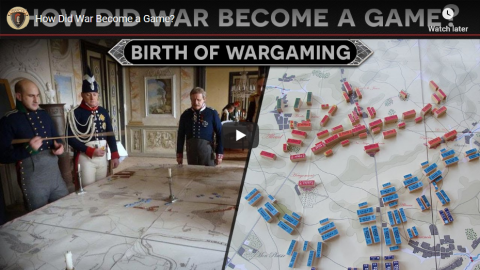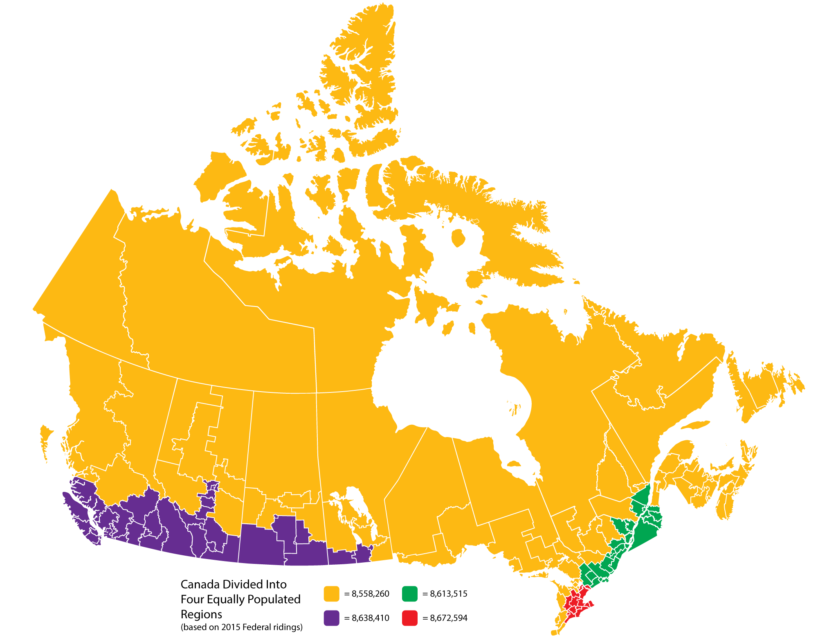Regarding bicycles, they, like motorcycles, have long since transformed from “a means of locomotion” to “a lifestyle”. Note that I’m only talking about AINO here. Everyone has heard that “more bicycles than people in the Netherlands” factoid, and Euros do seem to love them some bikes, but I haven’t spent enough time over there to say much about it. Here in the Former America, though, anyone who rides a bicycle past age 16 falls into one of two broad groups: 1) they’re nature lovers who want to be out in the countryside but for various reasons can’t take up hiking, or 2) they’re preening, posturing, virtue-signaling, passive-aggressive assholes. The latter outnumber the former about 5,000 to 1.
I’m deliberately discounting bicycles as a means of locomotion, you’ll notice, because look: America is a car society. Our cities are designed for cars. Indeed, given the vast distances involved over here, cars are what make our lifestyle possible. Europeans who haven’t been here, or who only visit the big tourist pits like NYC and LA, don’t get this. Even if you’ve seen the maps, it doesn’t really register until you experience it. I’m just guessing here, for purposes of explanation, but it really does seem to be the case that if it were possible to hop in your car and drive two hours due east from downtown Paris, you’d pass through three or four countries. There are lots of American cities where, if it were possible to hop in your car and drive two hours straight from downtown, you’d still be in that same city. The continental US is just mind-bogglingly huge; only Russians and maybe Australians share our mental maps. When you’ve got daily commutes that run an hour, hour and a half on freeways, setting anything up with bicycles in mind is just ludicrous.
Severian, “Cars, Bikes, Motorcycles”, Rotten Chestnuts, 2021-07-25.
April 11, 2024
QotD: North America will never be a “bicycle” culture
December 17, 2023
Mark Knopfler – “Sailing To Philadelphia” (The Studio Albums 1996-2007)
Mark Knopfler
Published 15 Jul 2022Official video to part 2 of Mark Knopfler’s The Studio Albums 1996-2007 featuring the remastered recordings from Sailing To Philadelphia.
(more…)
August 28, 2022
QotD: Hell’s inhabitants
Over large expanses of magnificent farmland, there has now spread a circuit-board of suburban sprawl, and along all approach roads the strip-mall phenomenon, of franchise capitalism at its most ghastly. City planners and surveyors worked it all out. Fifty years, and almost everything I loved has been wantonly destroyed. But thanks to those Google “street views”, I can see that the same has happened almost everywhere else I have ever been. We’re still calling it “progress”, and it is still leading us by the straightest possible line, to Hell.
[…]
I haven’t actually been to Hell, but I’m told it is full of surveyors and planners.
David Warren, “Esquesan”, Essays in Idleness, 2019-04-10.
July 11, 2022
Troop Deployments for the Battle of Kursk – WW2 Special
World War Two
Published 9 Jul 2022Over the last few weeks entire cities-worth of troops along with all the logistical support needed to support them have gathered in and around the Kursk salient. Here’s how they’ve been deployed, and where they could go from here.
(more…)
May 22, 2022
QotD: Surveying Upper Canada
Gentle reader is invited to draw a square on a piece of paper. Let each side be about ten miles. Eight miles will do, or nine; eleven or fourteen would also be acceptable. It could be more of a rectangle than a square, but try to make the corners sharp. Or even a triangle, if the paper runs out.
You have just drawn an Ontario Township.
Now, make your grid. The line roads, north and south, should be 100 chains apart (one-and-a-quarter miles), and the east-west sideroads either the same, or different. They needn’t come out evenly; you may leave a fraction on whichever side you didn’t start from. The whole board may have to be tilted at the “front” (baseline) to parallel a lakeshore, or accommodate the “back” of the next Township down. If you’re in the mood, you might want to draw a diagonal road, right through everything.
Congratulations. You may now have a job as one of His Majesty’s surveyors in pioneer Ontario. It’s a much better job than down south of British North America, where the land is somewhat populated already, and everyone seems to have an opinion. Up here, not yet any people in the way. But there is still the difficulty of slashing through the bush. You only draw “concessions” — future roads defining blocks, to be further subdivided into future farmlots. When the people granted land move in, they will be compelled by the guvmint to actually dig those endless, straight, access roads.
This will make the roads more interesting. Where the lines meet an obstacle, you get a little run around it. Or a big one, if the obstacle continues. Intersections don’t quite meet, so you get a jog. Or, you decide to put the jog in the middle of nowhere, instead. There were at least five major surveying systems in Upper Canada (later “Ontario”), and dozens of variations on each one. The line and side roads might be 66 chains apart, or more than twice that, depending on some local magnate’s whim. Or the surveyor may have been drunk that day.
David Warren, “Esquesan”, Essays in Idleness, 2019-04-10.
April 1, 2022
Why every world map is wrong
Jay Foreman
Published 20 Jun 2019Want to show this video to your geography class? A clean, school-friendly version of this video is here: https://youtu.be/J94N29NUtW4
BUY MUGS, T-SHIRTS, POSTERS ETC…
http://www.mapmenmerch.comSEE NEW EPISODES EARLY, AND BEHIND-THE-SCENES EXTRAS…
http://www.patreon.com/jayforemanHow do you show a round earth on a flat map? Is it possible? Jay and Mark find out using an orange and a rolling pin.
Written and presented by
JAY FOREMAN @jayforeman
MARK COOPER-JONES @markcooperjonesEdited by
JAY FOREMAN @jayforemanCamera
INDIA RAKUSEN @indiarakusenSee new episodes before anyone else, and get exclusive extras like out-takes and deleted scenes by signing up to my Patreon:
http://www.patreon.com/jayforeman
January 10, 2022
English counties explained
Jay Foreman
Published 13 Sep 2021BUY MAP MEN MUGS, T-SHIRTS, POSTERS ETC…
http://www.mapmenmerch.comSEE NEW EPISODES EARLY, AND BEHIND-THE-SCENES EXTRAS…
http://www.patreon.com/jayforemanWritten, presented and edited by
JAY FOREMAN https://www.twitter.com/jayforeman
MARK COOPER-JONES https://www.twitter.com/markcooperjonesAD, Camera, Props and Costumes
JADE NAGI https://www.twitter.com/jade_nagihttps://commons.wikimedia.org/wiki/Fi…
Maximilian Dörrbecker (Chumwa), CC BY-SA 3.0 https://creativecommons.org/licenses/…, via Wikimedia Commons
I wouldn’t say it explains why my home town seemed to move from county to county every few years since my family emigrated, but at least it provides a few clues about the changes.
November 20, 2021
Modern navigation aids compared
In common with most people in this age of pandemic, I don’t travel very much these days. Back when I did manage to get out and about on the roads, I had an early Garmin GPS device in my vehicle and when I eventually updated the sound system in my truck to a new device, it included a built-in GPS (that constantly “loses” satellite fixes and loudly informs me, even when I’m not using the mapping function). I’ve had both good and bad experiences with these devices, but Alistair Dabbs is much more entertaining with his story:
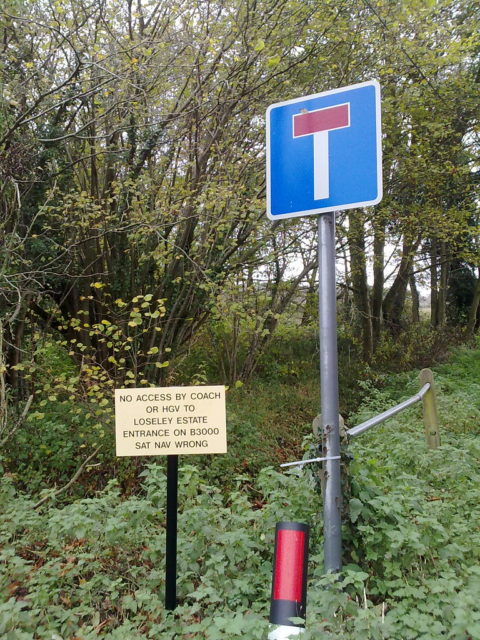
“Sat Nav FAIL” by J-o-n-o is licensed under CC BY-SA 2.0
Turn left. Turn right. At the roundabout, take the fourth exit.
Nobody enjoys being told what to do all the time but in the case of Google Maps I will make an exception. What I like about it best is that I can ignore her directions – should dissent take my fancy – and she doesn’t get cross.
This is in sharp contrast with all the classic sat-navs I have ever used, including the one embedded permanently into my current vehicle. Not only does it have a penchant for taking me on pointlessly circuitous routes, the wrong way up one-way streets, and along shortcuts too narrow for a bicycle, it grows angrier by the second when I refuse its orders.
“Turn right, turn right, turn right, turn left,” it would yell at increasing volume, trying to browbeat me into making a U-turn. Well no, I don’t want to drive through that building site or weave between those ambulances and fire engines dealing with that overturned lorry. Can’t you take me on an alternative route?
“Recalculating …” it would bark like a sulking dalek, but never accomplishing such. “Recalculating … Recalculating …”
Clearly I am not the only reluctant motorist to have given up on traditional sat-navs: not a single ad for one of these has turned up in my Black Friday spam deluge this year. And good riddance. Of the £3m per minute spent by Brits on their Black Friday shopping, roughly £0 will be spent on in-car nags.
Google Maps is more chilled. It’s as if she has resigned herself to my penchant for taking the wrong exits and missing turns. This is a habit I acquired by trying too hard not to drive like my father, who would obey every instruction from his sat-nav with military immediacy. As soon as he heard the words “Turn left”, he’d turn hard on the steering wheel straight away and we’d find ourselves heading up someone’s front drive, into an underground office car park or across a pedestrianised shopping walkway.
Me, I prefer to wait a bit – maybe a bit too long. Google Maps doesn’t mind and gives me no grief. Perhaps she also recognises her own faults in occasionally trying to direct me to drive through bricked-up entrances and children’s playgrounds. “Pff, whatever,” she probably thinks. “He’s too thick to follow the normal route. Let’s try a longer one.”
The odd thing is that she talks to Mme D in a very different way. On her smartphone, Google Maps is, well, chatty.
While all I get is a functional “Turn left/right” or “In 300 metres take the slip-road,” Mme D is treated to a tirade of verbosity. “Move into the filter lane and turn left at the next traffic lights heading north-northwest into B3496 Lower High Street but keep to the right to avoid the turnoff, mind the pedestrian crossing and wave hello to the butcher on the corner …” it spews, one directive tumbling into the next in a single continuous description of the journey and all its finest details.
March 10, 2020
Thought-saving inventions
In the latest issue of his Age of Invention newsletter, Anton Howes considers the innovations that helped provide short-cuts for thought, rather than labour:

The world on Mercator projection between 85°3’4″S and 85°3’4″N, such that image is square. 15° graticule. Imagery is a derivative of NASA’s Blue Marble summer month composite with oceans lightened to enhance legibility and contrast. Image created with the Geocart map projection software.
Image by Strebe via Wikimedia Commons.
When we think of labour-saving inventions, the kind of labour that springs to mind tends to be manual. We think of machines replacing the muscle of limbs and the dexterity of fingers, and we worry about their effects on unemployment and unrest. But there’s a subset of labour-saving inventions that rarely gets discussed. They might best be called thought-saving.
A few weeks ago I mentioned the introduction of mathematical techniques to navigation. Before the mid-sixteenth century in England, pilots very rarely even knew how to calculate their latitude, let alone their longitude. But over the course of just a few decades, England became one of the world leaders in navigational improvements. A handful of mathematicians saved pilots the trouble of calculation, by coming up with tables, instruments, diagrams, and rules of thumb. In the process, they improved navigation’s accuracy, and ushered in an age of English dominance of the high seas.
The historian Eric H. Ash gives a few great examples. In the 1590s, the explorer John Davis shared a way to calculate the time of high tide, without requiring multiplication. Likewise, William Bourne, a self-taught mathematician and gunner, in the 1560s provided an easy means of calculating the linear distance in one degree of longitude, at any given latitude. He provided a diagram — really an instrument, even if it wasn’t made of wood or brass — which with just a simple piece of string could be used to derive the answer without needing to understand cosines, or really any trigonometry.
The mathematicians did the same with maps, too (after all, aren’t all maps thought-saving?) The sixteenth-century cartographic innovations simplified the pilot’s ability to chart a route, for example by taking away all need to worry about the curvature of the earth. The famous 1560s map projection of Gerardus Mercator stretched the distance between the lines of latitude as they got closer to the poles, so that charting a course on such a map was a simple matter of drawing straight lines rather than complex trigonometry. The Mercator projection may well make Africa look smaller than Greenland — it’s actually almost fifteen times as large — but it made life significantly easier for mariners. For similar reasons, the mathematician John Dee designed a special chart — what he called the “paradoxall compass” — to aid the English explorers who in the 1550s went in search of a northeast and northwest passage to Asia. Conventional charts made navigating high latitudes confusing, as the north pole was a straight line — the map’s top border. Dee’s map made things easier by putting the pole at the centre, as a point, with the lines of latitude as concentric circles.
January 18, 2020
The innovative 1720s
In the latest Age of Invention newsletter, Anton Howes says the real Roaring Twenties were back in the eighteenth century:
Last week I called the 1720s an era of schemes. 1720 was the year of the South Sea Company’s crash, as well as the collapse of John Law’s Mississippi Company in France. But the decade saw some oft-neglected innovations too. As I never tire of saying, Britain’s extraordinary acceleration of innovation was about all industries, not just the famous ones of cotton, coal, iron, and steam — a point that the 1720s demonstrate perfectly.
For a start, it was the decade in which smallpox began to be systematically eradicated through inoculation. Lady Mary Wortley Montagu, having observed the procedure in the Ottoman Empire, had her daughter inoculated in London following an outbreak in 1721. The same epidemic prompted the trialling of inoculation in New England, and the reports of these successes provided the statistical evidence for it to be more widely spread. Soon, through Lady Montagu’s aristocratic connections, even the royal children were being inoculated. Inoculation was still dangerous — it was decades before non-deadly cowpox was discovered to also confer immunity to smallpox — but the 1720s marked the beginning of the end for one of humanity’s greatest killers.
[…]
Most famous, however, was the search for longitude. When at sea, it was relatively easy to tell how far north or south you were, but not how far east or west. The implications for navigation were immense. William Whiston, a protégé of Newton, was in 1714 instrumental in lobbying for the creation of a substantial government prize for a solution, and spent much of the following decades trying to win it. His earliest proposal, along with the mathematician Humphrey Ditton, was for ships anchored at fixed locations to essentially shoot fireworks at fixed intervals. By comparing the difference between seeing and hearing the flashes, you might calculate your longitude (it’s actually not that dissimilar to the principle that underlies GPS).
Marine chronometer “Copie No. 18″, Thomas Mudge, Jr., Robert Pennington, Richard Pendleton, et al, London, 1795 – Mathematisch-Physikalischer Salon, Dresden.
Photo by Daderot via Wikimedia Commons.But unlike with the medical advances, the poets were having none of it. As one of them rather crudely put it:
The longitude miss’d on
By wicked Will Whiston;
And not better hit on
By good master Ditton.
So Ditton and Whiston
May both be bepist on;
And Whiston and Ditton
May both be beshit on.Whiston and the other longitude-searchers also investigated using the earth’s magnetic variation — he produced perhaps the first map with isogonic lines, indicating where compass needles dipped — as well as solar eclipses. And as longitude could be found on land by looking at the eclipses of Jupiter’s moons, he tried to develop telescopes so that they could observe such events on the unsteady sea.
Nonetheless, the solution came from one of George Graham’s friends, the clockmaker John Harrison. Starting in the 1720s, Harrison developed a timekeeping device — the marine chronometer — that would keep its accuracy despite the rocking and rolling and atmospheric changes from being at sea. By comparing your local time with the time at Greenwich shown on the chronometer, you could calculate your longitude. (Though by the time his device came into use in the 1770s, another method had been discovered that involved observing the moon).
And of particular interest to woodworkers who also have historical interests:
While scientific minds sought the longitude, consumer items were also being transformed. In the 1720s, a ship’s carpenter to Jamaica, Robert Gillow, was among the first to import mahogany to Britain, creating a tradition of furniture-making in Lancaster that even the fashion-conscious French would come to regard jealously.
January 15, 2020
QotD: Louis XIV and the first accurate maps of France
In our current age of apps, able to tell us exactly where we are in the world at any time, it’s hard to imagine an era in which most people would never have seen a map. The average English person of the mid-sixteenth century would have had little idea of the overall shape of their own country, let alone a foreign one. And even the merchants and elites who did have access to maps did not have an entirely accurate picture. Before the systematic adoption of trigonometric surveying, as well as the ability to accurately calculate longitude by observing Jupiter’s moons using telescopes, the process involved a lot of guesstimation. When the new techniques were introduced towards the end of the seventeenth century, the results could come as quite a shock. Louis XIV, when shown a revised map of his country, allegedly remarked that he had lost more land to his astronomers than to his enemies. France was a lot thinner than everyone had supposed.
Anton Howes, “The House of Trade”, Age of Invention, 2019-11-13.
December 22, 2019
The North Magnetic Pole … a refugee from Canada’s Arctic
Colby Cosh on the latest refugee to flee from Canada:
On Dec. 10, the World Magnetic Model used to calibrate compasses was officially updated. The “model” can be thought of as a map that you would use, given your location on or near the Earth’s surface, to find out how many degrees your magnetic compass is off from true geographic north (or south). This ordinarily happens every five years, but the wizards in charge of the system decided to update a year early because the north magnetic pole is moving particularly fast right now.
Positions of North Magnetic Pole of the Earth. Poles shown are dip poles, defined as positions where the direction of the magnetic field is vertical. Red circles mark magnetic north pole positions as determined by direct observation, blue circles mark positions modelled using the GUFM model (1590–1890) and the IGRF-12 model (1900–2020) in 1 year increments. For the years 1890–1900, a smooth interpolation between the two models was performed. The modelled locations after 2015 are projections.
Map by Cavit via Wikimedia Commons.As most Canadians will have heard, magnetic north is, at the moment, fleeing Canadian territory and heading toward Russia. The rate of change is still very high by historic standards, first established in the early 19th century, but it has slowed just a little. In the year 1900 the pole was firmly in the Canadian Arctic, off Somerset Island. It wandered north, broke out of our high Arctic archipelago in about 2000, and has been streaking Siberia-ward across the open sea at more than 50 km a year since. The time component in the new WMM forecasts a slight slowing over the next five-year period, to about 40 km/yr.
This, like everything else involving Earth’s magnetic field, is a bit of a guess. The WMM has to be updated often because it does incorporate guesswork about the magnitude and direction of changes in the short-term future. The model will be most accurate now, and increasingly less so over the five-year term as the magnetic poles do their little dance — independently, by the way; the magnetic poles are not exactly opposite the Earth from one another, and the “south” one is scooting along much more slowly than the “north.” (Also, the magnetic north pole, the one to which the “north” needle of your compass is attracted, is actually a “south” pole to physicists.)
The truth is that the naive inquirer should not research Earth’s magnetism in the expectation that it is as well understood by scientists as, say, oceanic tides. (You can probably detect that I am talking about myself here.) The question “Why is the magnetic pole leaving Canada?” does not really admit of a solid answer. Maybe it’s the investment climate?
Probably most everybody is dimly aware that the magnetic poles flip outright from time to time — every half-million years on average. But the assumptions embedded in your handheld compass run much deeper than that. The Earth itself is only a big dipole magnet generally, rather than locally, and there is no guarantee of only one “north magnetic pole” as the field is measured near the surface. Competing “north poles” can form. (Which would, at least, let Russia and Canada each have their own …)
September 8, 2019
How Did War Become a Game?
Invicta
Published on 28 Jun 2019Get your first audiobook and two Audible originals when you try Audible for 30 days. Visit https://www.audible.com/Invicta or text “Invicta” to 500 500!
In this video we continue to take a look at the history of Kriegsspiel and explore the early days of wargaming that eventually gave rise to modern table top games such as Warhammer and Dungeons & Dragons.
Research: Jon Peterson
Script: Invicta
Narration: Invicta
Artwork: Gabriel Cassata
Editing: InvictaBibliography
Playing at the World by Jon Peterson
Debugging Game History: A Critical Lexicon by Henry Lowood
War Games: A History of War on Paper by Philipp von Hilgers
Pluie de Balles – Complex Wargames In the Classroom by Jorit Wintjes and, Steffen Pielstrom
July 19, 2019
Forgotten History: Musée de Plans-Reliefs (Paris)
Forgotten Weapons
Published on 18 Jul 2019http://www.patreon.com/ForgottenWeapons
Cool Forgotten Weapons merch! http://shop.bbtv.com/collections/forg…
Hidden away up on the 4th floor of the Paris Army Museum (in Les Invalides) is the rather unexcitingly-named Musée de Plans-Reliefs. Up here in the dark is a collection of strategic dioramas dating back some 350 years. French King Louis XIV created a workshop to build these 1:600 sale models of the major fortifications around the French coast as a tool for planning military actions. Napoleon resumed the practice in the 1800s, and today the collection includes some 100 different models. Not all of these are on display, but they are quite large and intricately detailed. Truly a hidden gem of military history in the attic of the museum. If you have an opportunity to visit the Paris Musée d’Armée, don’t miss the chance to take an hour or so to see these!
http://www.museedesplansreliefs.cultu…
Contact:
Forgotten Weapons
PO Box 87647
Tucson, AZ 85754
June 5, 2019
The four equal-ish regions of Canada
On Reddit, u/the_vizir posted an interesting illustration of Canada divided into four regions of (approximately) equal population, based on the 2015 electoral map:
I used this map of Canada’s Federal ridings by DrRandomFactor as a base. Then I attempted to mirror the original map’s divisions, tallying up the populations of the ridings, as based on this chart from Wikipedia.
Ultimately, the original map proved to be rather accurate in the West, but in the East it was off by quite a bit. Despite my best attempts, I could not get the entire Quebec City to Windsor corridor into two geographically contiguous regions. And so Windsor ultimately got shunted into the Great Orange North.
Interestingly, in terms of ridings, the four regions are also rather equal — which one might consider surprising given the population disparity between the largest and smallest ridings (the least populous riding, Labrador, has 27k people; while Brantford-Brant, the most populous, has 132k). However, in the end, the red region has 80 ridings, the green region 83, the purple region 86 and the orange region 89.
The 25 most populous urban areas within that large, orange region include:
- Halifax, NS — 404k
- Windsor, ON — 392k
- St. John’s, NL — 205k
- Barrie, ON — 197k
- Sudbury, ON — 165k
- Saguenay, PQ — 161k
- Moncton, NB — 145k
- Saint John, NB — 126k
- Thunder Bay, ON –121k
- Chatham-Kent, ON — 102k
- Fredericton, NB –102k
- Cape Breton, NS — 99k
- Sarnia, ON – 96k
- Prince George, BC — 86k
- Sault Ste. Marie, ON — 78k
- Fort McMurray. AB — 73k
- North Bay, ON — 70k
- Charlottetown, PE — 69k
- Grande Prairie, AB — 63k
- Rimouski, PQ — 55k
- Shawinigan, PQ — 54k
- Leamington, ON — 49k
- Truro, NS — 46k
- Prince Albert, SK — 44k
- Rouyn-Noranda, PQ — 42k
Somewhat surprisingly, even on this list, no communities in the Territories make the cut. The largest urban area in the North, Whitehorse, is still only 39th on this list, between Fort St. John, BC and Baie-Comeau, PQ. Yellowknife is 48th, between North Battleford, SK and Yorkton, SK.
The smallest riding in the orange area is Charlottetown at 46 sq. km, followed by Windsor West at 83 sq. km and Dartmouth-Cole Harbour at 102 sq. km. The largest riding in one of the other regions is Cypress Hills-Grasslands at 77,822 sq. km, followed by Kootenay-Columbia at 60,405 sq. km and Souris-Moose Mountain at 43,184 sq. km. All of these were in the purple region and were, unfortunately, necessary to bridge Winnipeg to the Calgary-Edmonton corridor, and then the Calgary-Edmonton corridor to the Lower Mainland.
(To those just looking for random facts: the smallest riding of them all is Toronto Centre, at 6 sq. km, followed by Papineau at 10 sq. km and both Laurier-Sainte-Marie and Rosemont-La Petite-Patrie at 11 sq. km each. The largest ones are Nunavut at 2,093,190 sq. km, Northwest Territories at 1,346,106 sq. km and Abitibi-Baie-James-Nunavik-Eeyou at 854,754 sq. km. And no, that last one doesn’t have the longest riding name. That would be Leeds-Grenville-Thousand Islands and Rideau Lakes, coming in at 49 characters and beating out the previous champion, West Vancouver-Sunshine Coast-Sea to Sky Country).
H/T to halls of macademia for the link.

